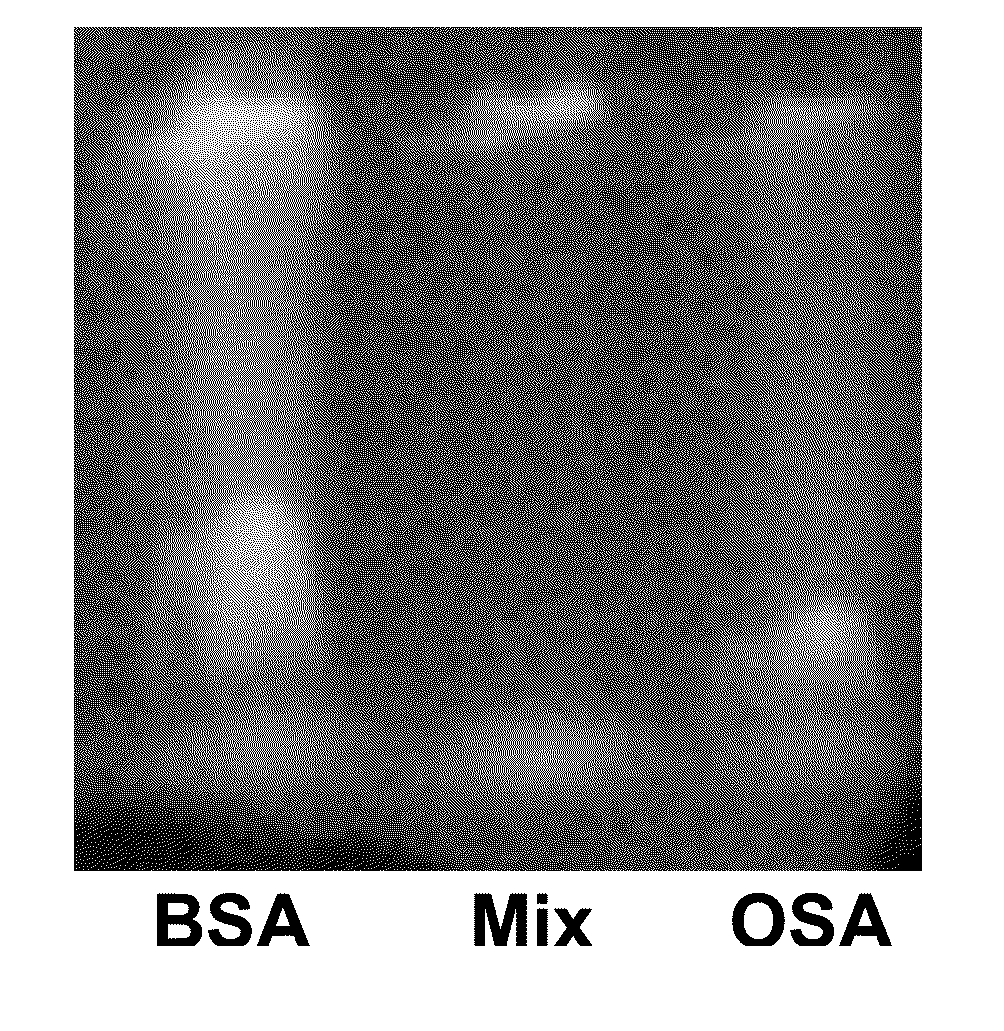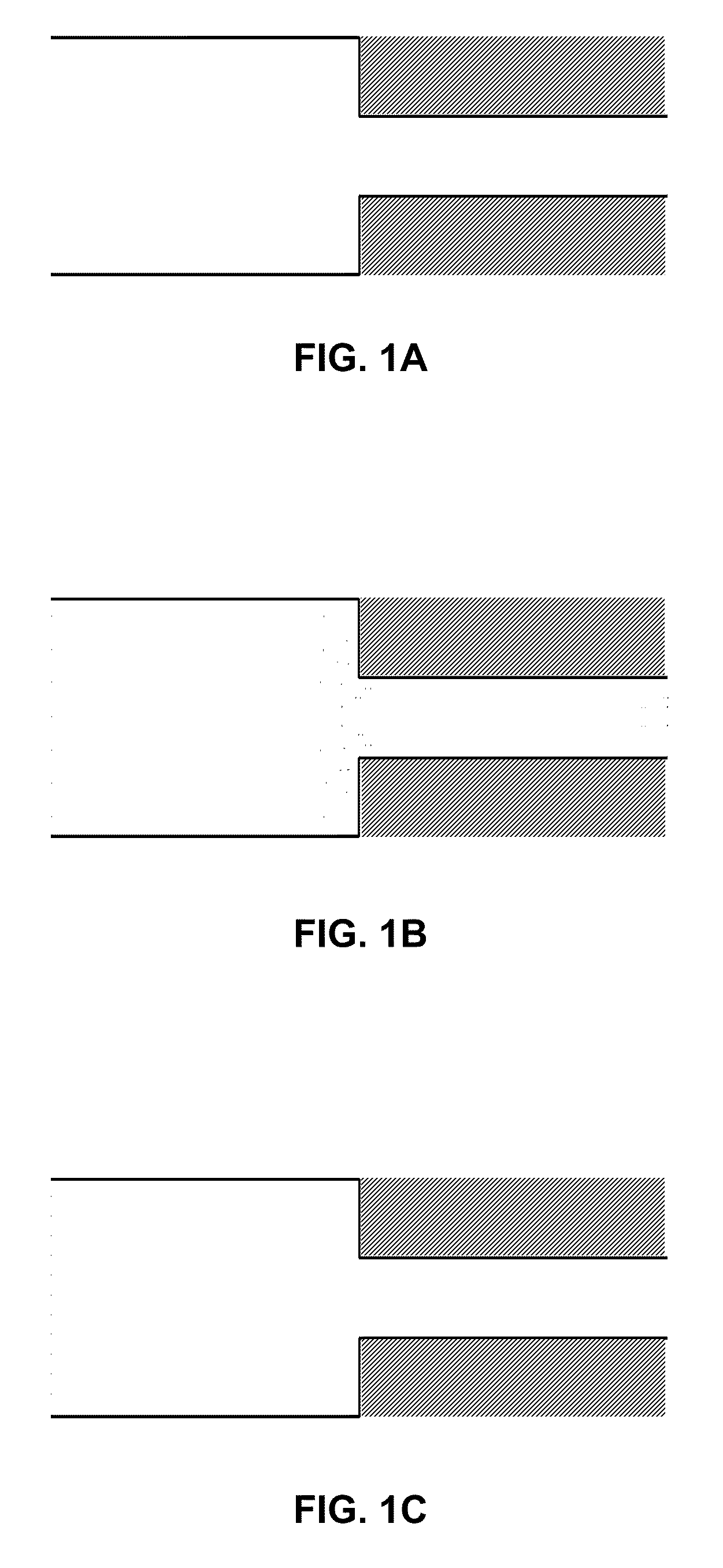Thermoresponsive microparticle composite hydrogels for electrophoresis
a technology of composite hydrogels and microparticles, applied in the direction of liquid/fluent solid measurement, fluid pressure measurement, peptides, etc., can solve the problems of no hydrogel in the prior art, and no effect of effective or sufficient separation or resolution of proteins
- Summary
- Abstract
- Description
- Claims
- Application Information
AI Technical Summary
Benefits of technology
Problems solved by technology
Method used
Image
Examples
example 1
PNIPAM Microparticle Synthesis
[0055]This EXAMPLE 1 will discuss the synthetic scheme for cross-linked poly(N-isopropyl acrylamide) microparticles (see TABLE 2 for reactant information). The % / C, as described by Formula 3, is expected to be 1.7% for a complete reaction. % C could be described as the mass fraction of crosslinker in the reaction matrix. This method of synthesis is described in St. John et al., 2007, which reference is hereby incorporated in its entirety. All reagents were used as received from their respective sources. The reactants were agitated by magnetic stirrer for at least one hour to achieve thorough mixing. Mixing was judged complete when all particulates appeared to be in solution. The resulting solution was degassed using a nitrogen purge for one hour. The solution container was then immersed in a 70.0° C. constant temperature bath, flushed with nitrogen, and the initiator was stirred in for 4 hours. Upon reaction completion, a precipitate formed at the botto...
example 2
PNIPAM Microparticle Characterization
[0056]Particles synthesized according to the methods of EXAMPLE 1 were characterized by two primary methods: visual observation of the lower critical solution temperature transition (“LCST”); and UV / Vis spectra taken above and below the transition. The water / PNIPAM particle mixture was photographed at a temperature below the LCST (32° C.) (see FIG. 3A), and then subsequently above the LCST (34° C.) (see FIG. 3B). The precipitation of particles noted in these images above the LCST is one indicator of the quality of the particles produced (i.e., below a critical molecular weight there would have been no observable transition), and suggests that the particles synthesized according to the methods of EXAMPLE 1 were of suitable quality.
[0057]A Varian UV / Vis spectrophotometer equipped with Cary Win UV software (Varian, Inc., Palo Alto, Calif.) was used to obtain spectra of the PNIPAM microparticles, using a scanning range between 200 and 800 nm (see FIG...
example 3
Control Gel and PNIPAM Composite Gel Synthesis
[0058]Composite composition is often described using the parts per hundred resin (pphr) technique as a basis, because many composites contain three or more phases (e.g. resin, fiberglass, sizing). Often when working with three phases, one wishes to keep the ratio between two of the phases the same while varying the third component. Thus, it is easier to communicate to an audience what is being varied if two of the components add up to 100% and the third component is considered to be composition beyond 100%. This technique is adopted here, and it is assumed that the concentration of the gel matrix (the acrylamide resin and its crosslinkers together) forms the basis for the “resin.” PNIPAM microparticles, even though they are polymer resin in nature, are described as the filler (third component), and therefore some percentage over 100%. The % T and % C calculations in this EXAMPLE 3 are calculated to describe monomer reacted to become gel ...
PUM
| Property | Measurement | Unit |
|---|---|---|
| temperature | aaaaa | aaaaa |
| temperature | aaaaa | aaaaa |
| temperature | aaaaa | aaaaa |
Abstract
Description
Claims
Application Information
 Login to View More
Login to View More - R&D
- Intellectual Property
- Life Sciences
- Materials
- Tech Scout
- Unparalleled Data Quality
- Higher Quality Content
- 60% Fewer Hallucinations
Browse by: Latest US Patents, China's latest patents, Technical Efficacy Thesaurus, Application Domain, Technology Topic, Popular Technical Reports.
© 2025 PatSnap. All rights reserved.Legal|Privacy policy|Modern Slavery Act Transparency Statement|Sitemap|About US| Contact US: help@patsnap.com



